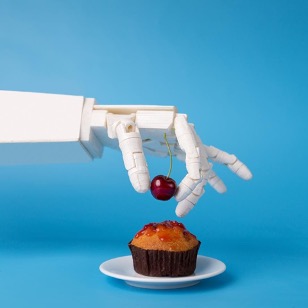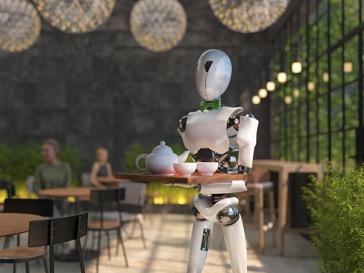Mehmet Orhun. 16 07.2024.

Hello Everyone. This is Mehmet Orhun from Atlanta, Georgia, USA. I am working as a Food Ser Supervisor and Accounting Assistant for the State of Georgia.
The future of the food industry is coming into focus as artificial intelligence (AI) grows progressiv ely popular. AI rapidly changes the way restaurant chains, food manufacturers, and other business operate (Owings, 2023). Some aspects of the restaurant business that are enhanced by AI include personalizing customer interactions, automating kitchen processes, and operational efficiencies (Sahota, 2024).
McDonald’s, Domino’s Pizza, Starbucks, Wingstop (a nearly 2000 unit wing chain), and Panera Bread are a few examples of companies that are taking advantage of all the benefits that AI has to offer. Wingstop partnered with a company to create a virtual ordering assistant which can answer multiple calls at the same time. It will also be able to assist with recommendations and speaks both English and Spanish (Owings, 2023).
Recently, McDonald’s acquired an AI company to integrate voice based AI technology in its drive throughs, enabling quicker and more accurate order taking. Similarly, Domino’s Pizza uses an AI assistant, Dom, for online orders, which has streamlined the ordering process and improved customer satisfaction. Starbucks’ AI system, Deep Brew Program, provides tailored suggestions to customers based on their previous purchases and preferences (Sahota, 2024).

In about five years AI will be used in kitchen operations, management, focusing on reporting, forecasting, predicting labor needs, and inventory. Restaurant operators may see customer-facing benefits with this new technology, including ordering, smart upsells, and more personalization. In addition, implementing AI will significantly increase operational efficiency by prioritizing orders based on channels, routing, and controlling orders, forever changing how operators run their businesses (Owings, 2023).
Food manufacturers such as Campbell Soup, are using AI to help with product development. Campbell is tracking data to help discover what its customer want and crave.
Through that initiative the company introduced new products like Chunky Ghost Pepper Chicken Noodle Soup, Spicy Sirloin Burger Soup, Steak and Potato Soup (Owings, 2023).
AI is also revolutionizing menu design by analyzing customer preferences and market trends. Machine algorithms suggest menu changes that are likely to appeal to customers, thus driving sales. For instance, a sushi restaurant in Japan, using AI, redesigned menu based on customer feedback and noticed a 10% increase in customer satisfaction. Looking to the future, AI has the potential to further transform the restaurant industry. Virtual Reality (VR) and Augmented Reality (AR) are leading the way for immersive dining. Restaurants will use AI with VR/AR to create captivating dining experiences, such as virtual tours of vineyards for wine tasting or thematic dining experiences (Sahota, 2024).
The integration of AI into the restaurant industry is not a trend but a transformational shift that is redefining dining experiences and operational efficiencies. From enhancing customer service to revolutionizing kitchen operations, AI is a powerful tool in the culinary world.
Embracing AI is the key for restaurants aiming to stay competitive and offer exceptional service in a rapidly evolving industry (Sahota, 2024).
Mehmet Orhun: mehmetorhun@hotmail.com
References:
Owings, T. (2023, March 10). The Future of AI and the Food Industry.
https://foodinstitute.com/focus/the-future-of-ai-and-the-food-industry/
Sahota, N. (2023, March 13). AI in the Culinary World: Revolutionizing Restaurant Ops &
Customer Experience. https://www.forbes.com/sites/neilsahota/2024/03/13/ai-in-the-
culinary-world-revolutionizing-restaurant-ops–customer-experience/